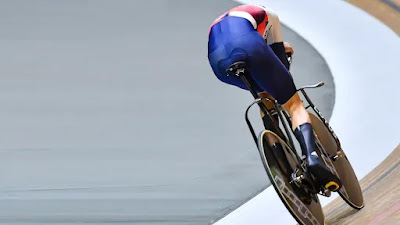This sort of thing has got to stop. Otherwise people will keep on buying tickets.
That assessment has been attributed to Conn Smythe, the longtime owner of hockey's Toronto Maple Leafs. He is also said to have threatened to fire any player who won the Lady Byng Memorial Trophy, which the National Hockey League awards for the player who best exemplifies "sportsmanship and gentlemanly play."
(What does it say about the league when one of the LBMT winners was nicknamed "Butch?")
Smythe--if he was indeed calling, if in sarcasm, for its abolition--was talking about the fights that often break out during hockey games. To be fair, fisticuffs are less frequent today than they were in the 1970s and 1980s, when every team had an "enforcer" and at least one team built its strategy around rough, often violent play.
And I met more than a few people who, after watching a game, wouldn't talk about a deft pass or slick goal. Instead, they'd enthuse about a brawl involving, say, Dave Schulz or "Tiger" Williams. So, if Smythe indeed uttered the words at the beginning of this post, he may have been onto something.
At any rate, he knew that his sport, like just about every other, has moves and tactics that are popular with fans (some, anyway) but cause the sports' governing bodies--and, sometimes, commentators--to wag their fingers, whether at the player who did something not-quite-legal or ethical, or the fans who enjoyed it.
 |
| Photo by David Ramos/Getty Images |
In cycling, one of those tactics is riding in a "super tuck" position. The rider places his or her forearms on the handlebars--sometimes on "aero bar" extensions for this purpose--and pedals, head down and back tilted forward. Sometimes the rider even sits on the frame's top tube.
This move originated with time trialists, became popular on the track and increasingly became part of road racing, especially in "breakaways" or downhill descents. In races that are decided by seconds, or fractions thereof, riding for a time in this position can make a difference between finishing on the podium or in the pack.
For whatever advantages it may offer, one can be forgiven for wondering whether teams, race promoters or others encourage racers to ride in the position because it makes for great photos, posters and videos. I'll admit that it catches my eye, even though I've seen it many times.
But that's not the reason why the Union Cyclisme Internationale (UCI) is banning it. Rather, the sport's governing body cites the danger, not only to the riders themselves, but to the riders--and, in some cases, spectators--around them. While the position is aerodynamically efficient and may allow maximum use of certain muscle groups for brief periods of time, it's also less stable.
Opponents of the ban cite the riders' skill: After all, their "day at the office," if you will, is spent on their bikes or trainers. So, they say, such riders, who understand its pros and cons, should be allowed to take the risk of using it. The other riders in the peloton have, one assumes, similar skill levels to person "going into a tuck" and will either do the same or adjust, in some other way.
Of course, this argument begs two questions: 1. If riders are allowed to take the inherent risks of riding in "the tuck," should they be allowed to take on other risks--such as from using performance-enhancing substances? 2. Is a "blanket" ban the right solution to eliminate the risks inherent in "the tuck?"
Whatever its merits, or lack thereof, the ban is set to take effect on 1 April. No, that's not a joke!













